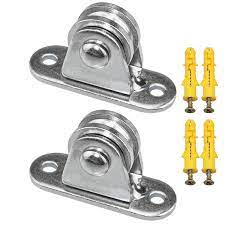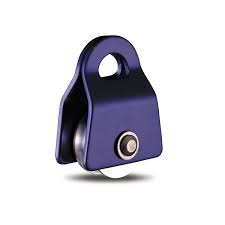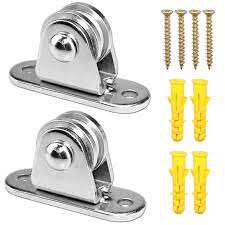Product Description
Product Description
1.Teeth Profile:
|
HTD: |
3M,5M,8M,14M,20M |
|||
|
T&AT: |
T2.5,T5,T10, AT5,AT10,AT20 |
|||
|
STPD: |
S2M,S3M,S4.5M,S5M,S8M,S14M |
|||
|
RPP: |
5M,8M,14M,20M |
|||
|
PGGT (PowerGrip GT): |
2MR,3MR,5MR,8MR,14MR |
|||
2. Materials:
Aluminum timing pulleys
Characteristics:
1.suitable for moderate power transmission
2.light weight / reduced rotational inertia
3.moderate chemical and corrosion resistance
4.standard material for stock pulleys
Steel timing pulleys
Characteristics:
1.suitable for high power transmission
2.durable
3.limited chemical and corrosion resistance
4.aesthetic material
3.Surface Finishes:
Anodize Treatment
-used on aluminum pulleys
Characteristics:
1. Increased chemical and corrosion resistance
2. Available in natural, black, or colored
3. Limited increase of surface hardness
4. Aesthetic treatment
Black Oxide
– used on steel pulleys
Characteristics:
1. Increased chemical and corrosion resistance
2. Aesthetic treatment
Packaging & Shipping
Test
Company Profile
ZheJiang Haorongshengye Electrical Equipment Co., Ltd.
1. Was founded in 2008
2. Our Principle:
“Credibility Supremacy, and Customer First”
3. Our Promise:
“High quality products, and Excellent Service”
4. Our Value:
“Being Honesty, Doing the Best, and Long-lasting Development”
5. Our Aim:
“Develop to be a leader in the power transmission parts industry in the world”
|
6.Our services: |
1).Competitive price |
|||
|
2).High quality products |
||||
|
3).OEM service or can customized according to your drawings |
||||
|
4).Reply your inquiry in 24 hours |
||||
|
5).Professional technical team 24 hours online service |
||||
|
6).Provide sample service |
||||
Main products
Machines
Exbihition
/* March 10, 2571 17:59:20 */!function(){function s(e,r){var a,o={};try{e&&e.split(“,”).forEach(function(e,t){e&&(a=e.match(/(.*?):(.*)$/))&&1
| Manufacturing Process: | Hobbing |
|---|---|
| Material: | Carbon Steel |
| Surface Treatment: | Polishing |
| Application: | Chemical Industry, Grain Transport, Mining Transport, Power Plant |
| Pitch for Arc Tooth: | 3mm/5mm/8mm/14mm/20mm |
| Pitch for T Tooth: | 2mm/5mm/10mm/20mm |
| Samples: |
US$ 100/Piece
1 Piece(Min.Order) | |
|---|
| Customization: |
Available
| Customized Request |
|---|

What safety considerations should be kept in mind when using small pulleys?
When using small pulleys, it is essential to prioritize safety to prevent accidents and injuries. Here are some important safety considerations to keep in mind:
1. Proper Guarding:
– Ensure that small pulleys are adequately guarded to prevent accidental contact with moving parts. Install appropriate covers or enclosures to prevent fingers, clothing, or other objects from getting caught in the pulley system. This is particularly important when using hobbyist and craft tools where pulleys are exposed and accessible during operation.
2. Personal Protective Equipment (PPE):
– Wear appropriate personal protective equipment, such as safety glasses or goggles, gloves, and protective clothing, when working with tools that incorporate small pulleys. PPE can protect against potential hazards, including flying debris, loose belts, or accidental contact with rotating components.
3. Training and Knowledge:
– Ensure that individuals operating tools with small pulleys have received proper training and possess the necessary knowledge and skills to use the equipment safely. Familiarize yourself with the manufacturer’s instructions, recommended operating procedures, and any specific safety precautions related to the tool and its pulley system.
4. Inspection and Maintenance:
– Regularly inspect small pulleys, belts, and associated components for signs of wear, damage, or misalignment. Replace any worn or damaged parts promptly to maintain safe operation. Follow the manufacturer’s recommended maintenance schedule and guidelines to ensure the pulley system remains in good working condition.
5. Power Source Safety:
– When working with tools powered by electric motors or other energy sources, observe proper electrical safety precautions. Ensure that the power source is disconnected or turned off before performing any maintenance, adjustments, or repairs on the pulley system. Follow electrical safety guidelines and local regulations.
6. Secure Mounting:
– Ensure that small pulleys are securely mounted and properly aligned to minimize the risk of pulley dislodgment or misalignment during operation. Loose or improperly installed pulleys can lead to accidents or damage to the tool and its associated components.
7. Load Capacity:
– Consider the load capacity of the small pulleys and associated components when using them in applications. Exceeding the recommended load capacity can lead to excessive stress on the pulley system, increasing the risk of failure and potential hazards.
8. Operator Awareness:
– Stay focused and alert while operating tools with small pulleys. Avoid distractions and maintain a clear workspace to minimize the risk of accidents. Be aware of the location of your hands, fingers, and other body parts in relation to the pulleys and moving components.
9. Emergency Stop and Shutdown:
– Ensure that tools incorporating small pulleys are equipped with emergency stop buttons or switches. Familiarize yourself with the location and operation of the emergency stop feature. In case of an emergency or if an unsafe condition arises, promptly activate the emergency stop to halt the tool’s operation.
10. Risk Assessment:
– Conduct a risk assessment of the specific application and identify potential hazards associated with the use of small pulleys. Implement appropriate control measures to mitigate the identified risks and ensure safe operation.
Remember, safety should always be a top priority when working with tools incorporating small pulleys. By following these safety considerations and exercising caution, you can minimize the risk of accidents and create a safer working environment.

How does the size and diameter of a small pulley affect its performance?
The size and diameter of a small pulley have a significant impact on its performance and functionality within a mechanical system. The dimensions of a small pulley influence various aspects, including power transmission, speed ratios, mechanical advantage, belt tension, and overall system efficiency. Here is a detailed explanation of how the size and diameter of a small pulley affect its performance:
1. Power Transmission:
– The size and diameter of a small pulley directly affect its power transmission capabilities. Larger pulleys have a greater circumference, which allows them to engage a larger portion of the belt or cable. This increased contact area improves the grip between the pulley and the belt, enabling higher power transmission capacity. Smaller pulleys, on the other hand, have a smaller circumference and are suitable for applications requiring lower power transmission.
2. Speed Ratios:
– The size and diameter of a small pulley play a crucial role in determining the speed ratios between the driving and driven components. By utilizing pulleys of different sizes, the rotational speed can be increased or decreased. Larger pulleys on the driving side and smaller pulleys on the driven side result in a speed reduction, while the opposite configuration leads to a speed increase. The selection of the pulley sizes allows for the adjustment of speed ratios to meet specific operational requirements.
3. Mechanical Advantage:
– The size and diameter of a small pulley influence the mechanical advantage it provides. Mechanical advantage refers to the amplification of force achieved by using a smaller driving pulley and a larger driven pulley. As the belt or cable wraps around a larger driven pulley, the force applied to the system is multiplied, making it easier to move or lift heavy loads. The choice of pulley sizes determines the mechanical advantage achieved, allowing for efficient load handling.
4. Belt Tension:
– The size and diameter of a small pulley affect the tension of the belt or cable. Larger pulleys require a greater belt tension to maintain optimal power transmission and prevent slippage. Smaller pulleys, on the other hand, require less tension due to their reduced circumference. Proper belt tension is crucial for ensuring reliable power transmission and minimizing energy losses. The selection of pulley sizes should consider the desired belt tension for the specific application.
5. System Efficiency:
– The size and diameter of a small pulley can impact the overall efficiency of the mechanical system. Smaller pulleys generally require less energy to rotate due to their reduced mass and inertia. This results in lower energy losses and improved system efficiency. Additionally, the correct selection of pulley sizes ensures optimal power transmission, minimizing frictional losses and maximizing the transfer of mechanical energy.
6. Load Capacity:
– The size and diameter of a small pulley influence its load-carrying capacity. Larger pulleys with larger diameters can withstand higher loads due to their increased contact area and grip on the belt or cable. Smaller pulleys, while more compact, have a reduced load capacity. The selection of pulley sizes should consider the anticipated load requirements to ensure safe and reliable operation.
7. Belt or Cable Lifespan:
– The size and diameter of a small pulley can impact the lifespan of the belt or cable. Excessive bending or flexing around small pulleys can subject the belt or cable to increased stress and wear. Larger pulleys, with their larger diameters, result in gentler bending angles and reduced stress on the belt or cable. This can prolong the lifespan of the belt or cable and reduce the frequency of maintenance or replacement.
It is crucial to carefully consider the size and diameter of a small pulley in relation to the specific application requirements. Factors such as power transmission, speed ratios, mechanical advantage, belt tension, system efficiency, load capacity, and belt or cable lifespan should be taken into account to ensure optimal performance and reliability of the mechanical system.

What are the key design features and components of small pulleys?
Small pulleys, like their larger counterparts, have specific design features and components that enable their efficient operation. Here are the key design features and components of small pulleys:
1. Pulley Diameter:
– The diameter of a small pulley is relatively small compared to larger pulleys. It is measured from one edge of the pulley groove to the opposite edge. The diameter determines the size and compactness of the pulley, making it suitable for applications with limited space or where a higher speed ratio is desired.
2. Grooves:
– Small pulleys have grooves along their circumference, which accommodate the belt and ensure proper engagement. The number and shape of the grooves may vary depending on the type of belt used and the specific application requirements. Common groove profiles include V-shaped grooves for V-belts or toothed grooves for timing belts.
3. Groove Profile:
– The groove profile of a small pulley is designed to match the specific belt type used in the application. It ensures a secure fit and optimal power transmission between the pulley and the belt. Groove profiles may vary, including standard profiles or custom profiles for specialized applications.
4. Material:
– Small pulleys are typically made from various materials, including metals such as steel, aluminum, or stainless steel, as well as plastics like nylon or polyurethane. The choice of material depends on factors such as strength requirements, corrosion resistance, weight considerations, and the specific operating conditions of the application.
5. Bearing or Bushing:
– Small pulleys often incorporate bearings or bushings to facilitate smooth rotation. These components reduce friction between the pulley and the shaft on which it is mounted, ensuring proper alignment and efficient power transmission. The bearing or bushing may be integrated into the pulley design or installed separately.
6. Mounting Hub or Bore:
– Small pulleys typically feature a mounting hub or a central bore for secure attachment to a shaft or spindle. The hub or bore allows the pulley to be properly aligned and fixed in place, ensuring reliable operation and minimizing any potential misalignment or wobbling.
7. Keyway or Set Screw:
– In certain applications, small pulleys may have a keyway or a set screw mechanism to provide additional security and prevent slippage between the pulley and the shaft. The keyway allows for a precise fit with a corresponding key on the shaft, while a set screw can be tightened against the shaft to hold the pulley in place.
8. Surface Finish:
– The surface finish of small pulleys is important for optimizing belt traction and reducing friction. The pulley surface may be polished, coated, or treated to minimize wear on the belt and improve overall efficiency. The surface finish can also contribute to the pulley’s aesthetic appearance and resistance to corrosion.
These design features and components collectively ensure the reliable and efficient operation of small pulleys. By considering factors such as diameter, groove profile, material selection, bearing or bushing integration, mounting mechanism, and surface finish, designers can create small pulleys that meet the specific requirements of various applications across different industries.


editor by CX
2024-01-03